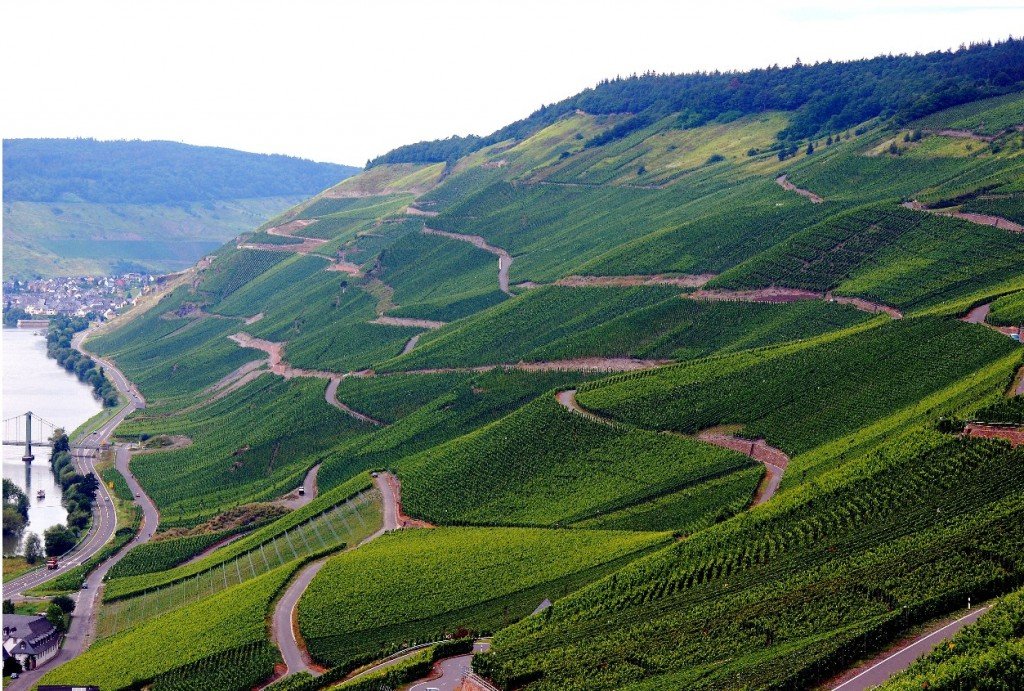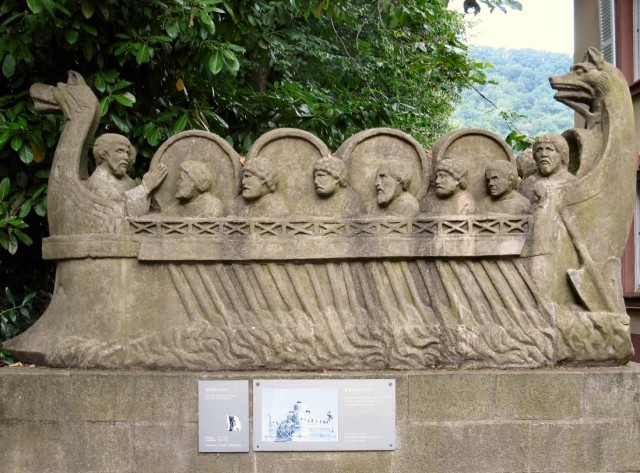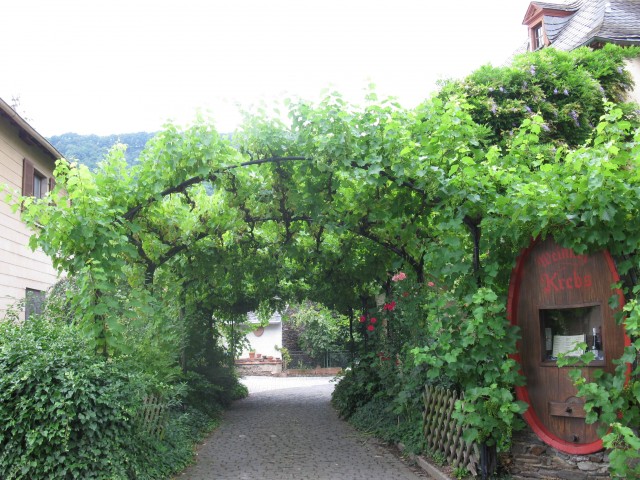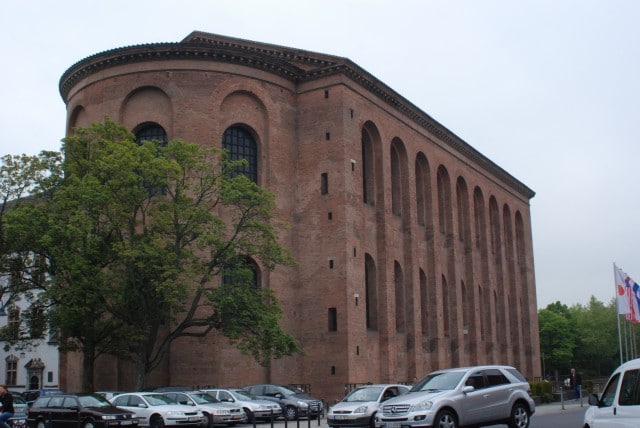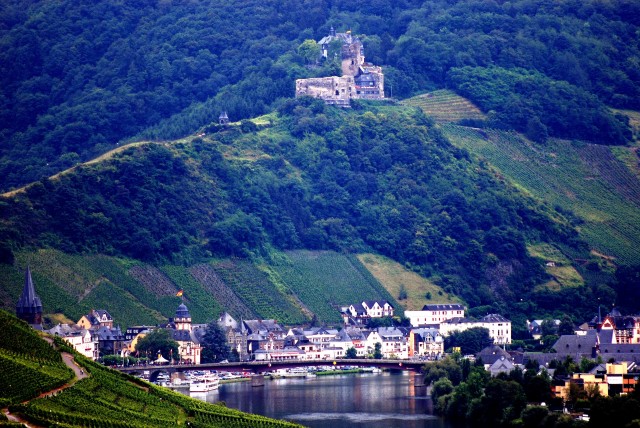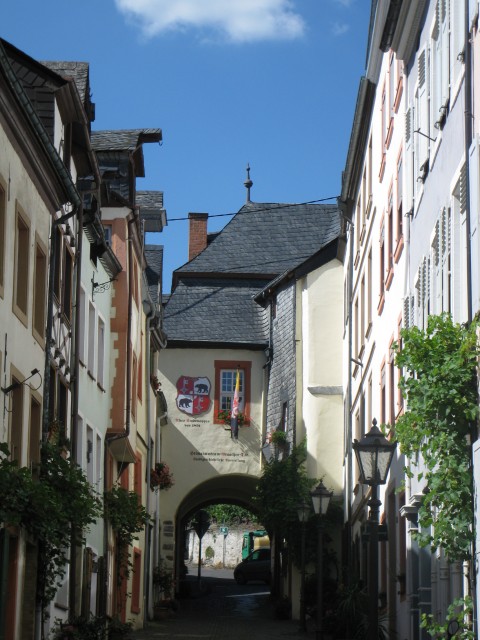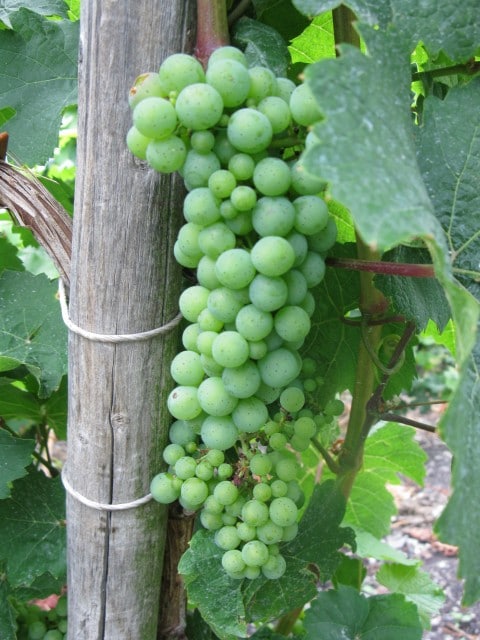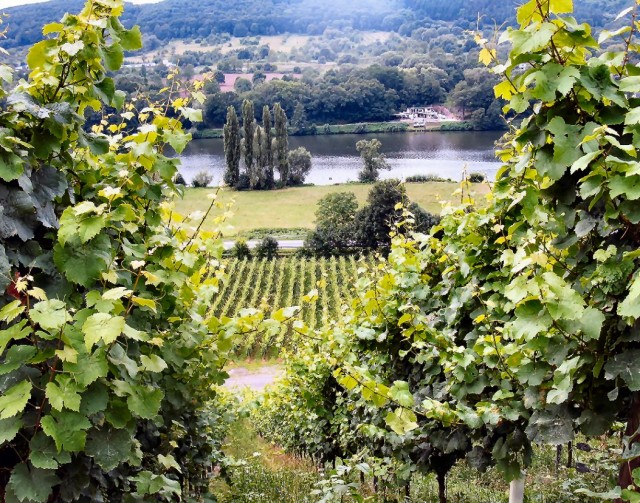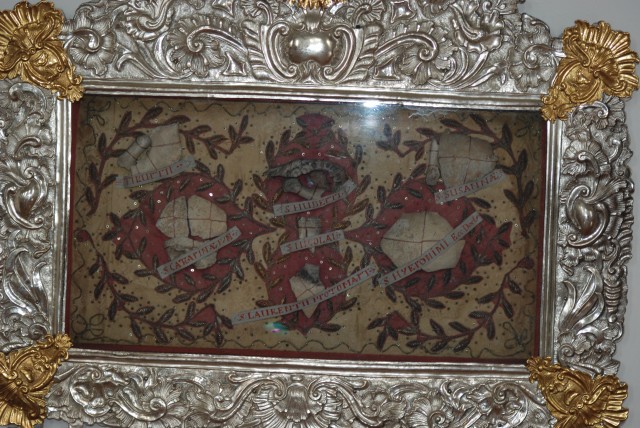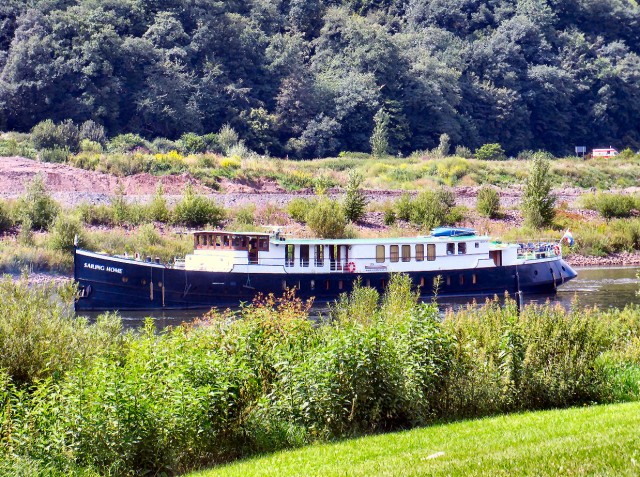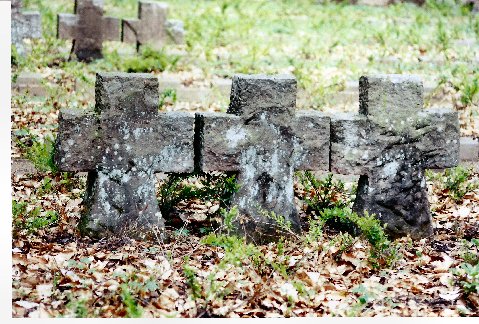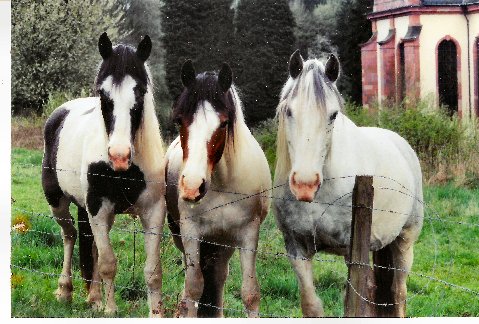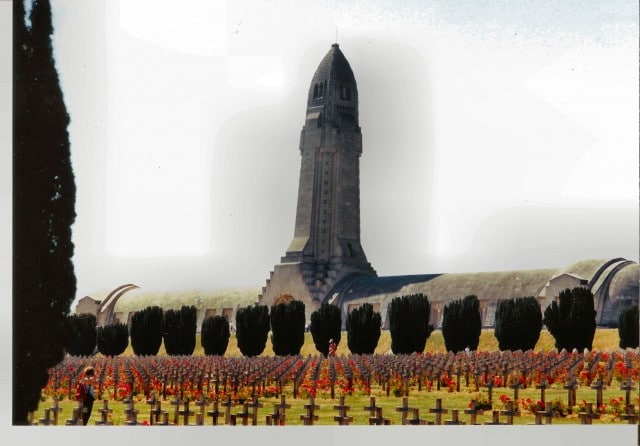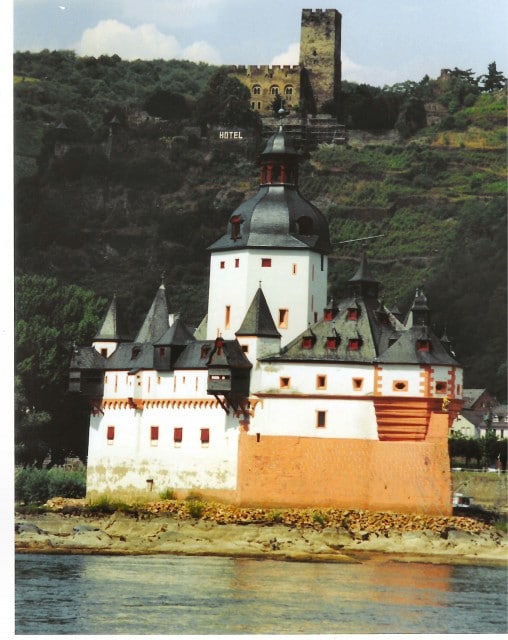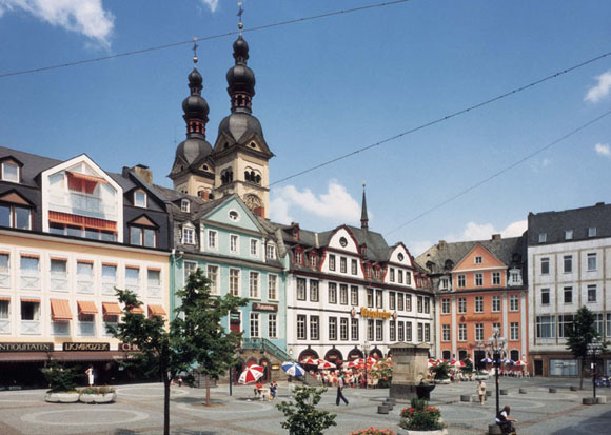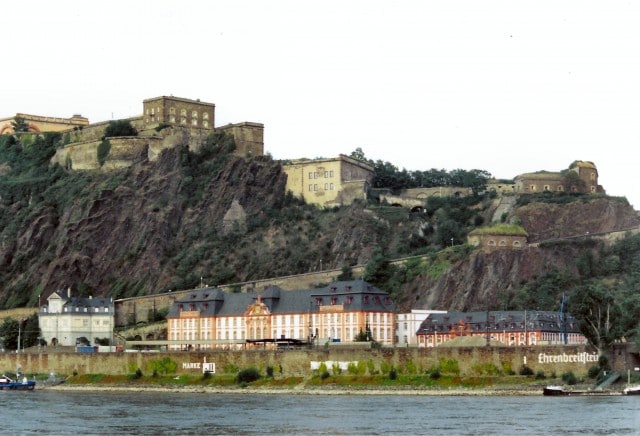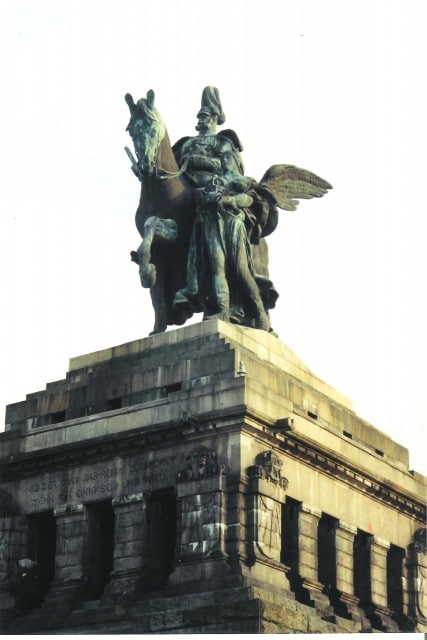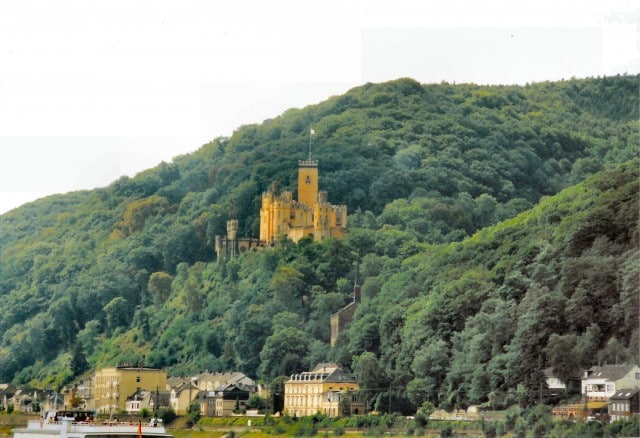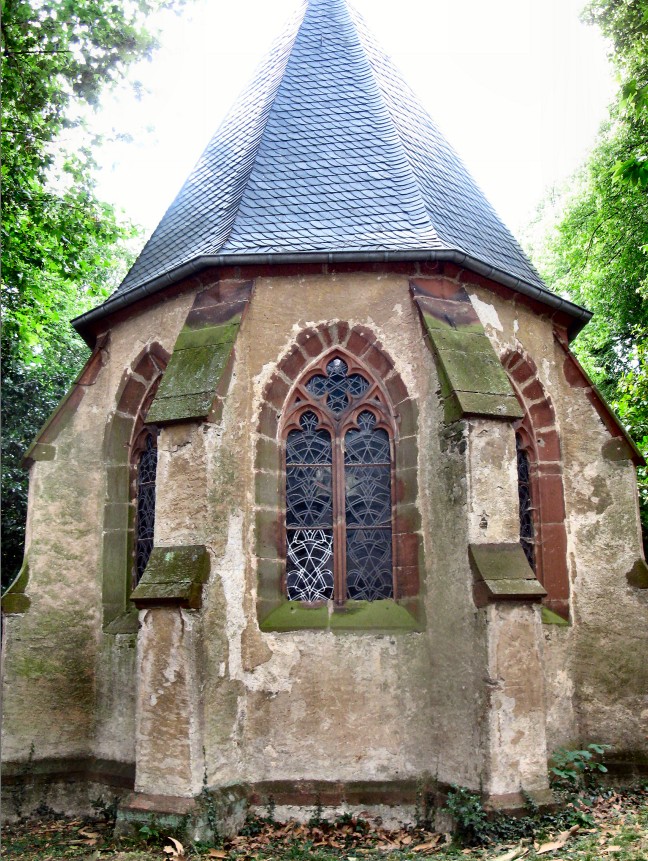 Ausonious, the Roman Poet, wrote about it first.
Ausonious, the Roman Poet, wrote about it first.
by Carol Ware Duff
The Mosel region of Germany is full of history, often ancient, beautiful scenery, pristeen vinyards, and a chance to sample the Reislings that the area is famous for. Photos by Carol Ware Duff
Over 1700 years ago the Roman poet Ausonius wrote about the Mosel. It was 368 AD and Ausonius was on “walkabout” with the Emperor Valintinian. Ausonius was born in Gaul just north of the Pyrenees in the Roman city of Bordeaux. Even then, Bordeaux was known as the center of some of the ancient world’s finest wines. When Ausonius found himself in the Roman capital of Trier, on the Mosel, tutoring the Emperor’s children, he recognized a land much like his birthplace.
Ausonius was the first travel writer of the Mosel. The Mosel he wrote of then was not unlike the one we see today, with its towns, vineyards and meandering path to the Rhine. Today, compared to the industrialized Ruhr, the Mosel is a forgotten backwater, preserving much from centuries and even millennia past but then, in the newly Christianized Roman Empire, the Mosel was the “heartland” of an empire that was becoming increasingly “Germanic” in nature.
The rule of the day in the 4th century was a Roman capital no longer in Italy but in Trier, among the Belgian tribes. Emperors had moved from Rome to Constantinople and even Milan as external threats and internal strife made rule from distant Rome an impossibility. Here in the 4th century, the new “Rome” would be in the province of Belgia. Belgia was the land north of Gaul’s Meuse River, bordered on the west by the Germanic tribes that would eventually infiltrate and later absorb the Western Roman Empire.
The modern city of Trier, still carries much of its Roman legacy. Sitting well south along the Mosel, prior to its descent into France, Trier’s heritage as the one time capital of the world’s most powerful empire is still not only visible, but very much a part of the everyday life of local residents. Established by the Emperor Augustus and called Augusta Trivium by the Romans, Trier began as a Roman outpost on the frontier, later falling to the barbarians and after being reconquered was eventually the capital of the empire.
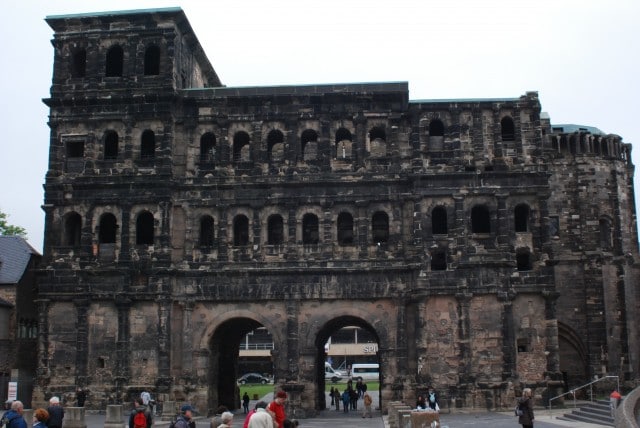 Imagine enjoying a braut or potato pancake at the city’s famous Christmas market while feeling the wind whistle through the Porta Negra, the famed “Black Gate” that greeted visitors so many centuries before. Nevertheless, the Porta Negra, a onetime
Imagine enjoying a braut or potato pancake at the city’s famous Christmas market while feeling the wind whistle through the Porta Negra, the famed “Black Gate” that greeted visitors so many centuries before. Nevertheless, the Porta Negra, a onetime
entrance through the old city walls and the well-known symbol of Trier, is not the only vestige of that ancient time. Trier also boasts the Kaisertherme baths, a minor amphitheater along with walls, pillars and other remains spreading to nearly every part of the city.
Foremost, is the incredible fourth century Basilica of Constantine, the largest single room Roman structure which still survives. Trier’s cathedral, dating from the same period is a wonderful mix of architectural styles including Roman and Baroque. Devout Christians from throughout the world travel here on pilgrimage to view the church’s most famous relic, a robe reputed to have been worn by Christ and to have magical powers.
To the wine enthusiast, Trier, on the Uber Mosel, is at the southernmost door to the Mosel Valley’s world famous vineyards. The center of that valley and to many the center of the Riesling world is the small town of Bernkastel. Long famous for its fortress, the Landshut, built by the Bishop of Trier in the 11th century. Bernkastel is a good jumping off point for exploring the middle Mosel and its wine country.
The origins of Bernkastel are not clear. The city received its charter in 1291. We know that in 1458 Nicholas von Keus,
philosopher and mathematician built a hospital Hofgut Cusanus that survives to this day as a museum, library, and the famous Vinothek tasting facility. Thirteenth century woodcarvings of the city show a medieval walled town built between the bank of the Mosel and the cleft of the hill now known as the Bernkastel Doctor vineyard. Today, when you walk the narrow stone paved streets, you can imagine life in the eleventh century. Life would have definitely revolved around grape vines and wine making just as it does today.
Today, finding the remains of that old city wall is difficult. The gray slate church tower that looms over the city was once a part of medieval defenses. The city’s northern gate, the Graacher Tor, which still leads across the vineyards to the adjacent town of Graachstill looks now as it did then. It is the only one of the city’s 8 original gates to survive.
Currently the streets are lined with hotels, guesthouses, and cafes and thronged with tourists. A visitor to the area can generally get a good meal at one of the city’s fine restaurants like the Ratskeller on the beautiful market square or at the Altesbrauhaus, which overlooks the river. Specialties include game dishes, some featuring wild boar that are a common site to locals.
Endless other dining opportunities abound from the Cafe Hansen with their incredible chocolates and pastries to one of the village Metzgers, meat markets that serve sandwiches and soups, as the German alternative to fast food. There is always the stroll across the river to Kues for a Turkish donner kabob or the hard-bitten can do the 15-kilometer drive to Wittlich and its McDonalds.
Lodging in Bernkastel is never difficult as there are usually adequate rooms available at the city’s hotels and guesthouses. The city maintains a lodging board with free telephone that electronically tracks room vacancies both in the city and nearby
communities. Everything from 4 star hotels to Pensions can be found.
A useful alternative for Riesling lovers or family travelers can be found by contacting local wineries for apartments that are more economical and suited for larger groups. Prices are amazingly affordable and there are worse things than
vacationing at a winery. The winery guest houses have long been holiday favorites for Germans who will bike along
the Mosel from winery to winery or move into a choice location and use it as a central point for holiday treks.
Just north of Bernkastel, along the Mosel, is the town of Zeltingen. Weingut Alfred Gessinger operates a guesthouse
where you can spend a holiday and also taste his sought after wines. The Gessinger family has been making wines
there since 1680. Immediately south of Bernkastel, across the river on the Kueser side, is the small town of Lieser. This is the home of the Weingut Ludwig Thanisch, a regular stopping off place for Mosel wine tours. Their winemaker Jorg Thanisch greets guests and hosts tastings for groups up to 60. Guest apartments there provide a wonderful view of the river traffic on the Mosel. Along with the coal and freight barges, one can see water taxis, excursion boats, and the much larger cruise barges winding their leisurely way up the Mosel from France to Koblenz and the Rhine and beyond.
If you travel further back toward Trier, you come to the famous wine center of Piesport. Here the Matheus family operates a lovely guesthouse. Adjacent to their famous winery, Weingut Weller-Lenhert, Piesport, long a wine producing center, from the Celtic pre Roman times onward is the source of many of the world’s best Rieslings. At the base of Goldtropfchen the remains of a fourth century Roman wine press can be seen. Taking the old Roman switchback road to the overlook at the top of the Goldtropfchen affords vistas of the leisurely Mosel and the gently slopping vineyards of Michaelsberg in the distance.
Across the Mosel and a short ways toward Trier is the ancient town of Numegen. During the 1st century AD, while Trier was the capital of Gaul, Neumagen, or Noviomagus, as it was called, became popular with Romans who tired of city living. By the 2nd and 3rd centuries as Germanic tribes began raiding, the wealthy abandoned Neumagen.
As early as the second century AD, Numegen was both a wine shipping center for the Romans. Remains of Numegen’s Roman past are everywhere to be seen and no excavation fails to bring even more to the surface. Numegen’s modest church, built largely on ancient Roman foundations, as is everything else in town, is the home of one of Christendom’s finest collection of
relics. Lining the church’s walls class are cases enclosing the bones of numerous saints including the Apostle Peter.
A short drive from the Mosel, nestled in a gentle valley, is the village of Bergen. Bergen is a small and isolated village that can trace its origins to Celtic times. Far from the bustle of the more touristy towns in the Mosel, time genuinely stands still here. Centuries of isolation has given the town the look and feel long since abandoned in more “progressive” communities.
Here wine maker Ingo Norwig hosts vacationers at his guesthouse while producing some of Germany’s finest traditional Rieslings. Another local winemaker from Bergen is Dr. Joerg Pauly, at Weingut Pauly Bohn, who has earned the coveted ecovin
designation for producing outstanding wines under the required strict environmental guidelines.
As much as life along the Mosel centers around wine, life also centers around the river itself. Taming the Mosel is a project the German government places as a high priority as river traffic is important to the local economy and flooding has been a big problem for centuries. Few rivers in the world travel as tortured path as the Mosel or are capable of the damage of the Mosel.
Flowing north, from well into France, the Mosel passes Nancy and Trier on its way into Germany northward to meet the Rhine. Two tributaries of the Mosel, the Ruwer and the Saar, both have wine growing areas of great renown, though much smaller than the Mosel. This area of Germany, generally know as the Eifel valley, is also known for its gentle farmlands, its rolling hills, and its ceaseless winds. The scars on the landscape, of course, are those marks left by the rivers, most noticeably the Mosel with its
thousand foot banks.
The region, visited for its castles, vineyards, and its Roman past, has made more recent contributions. Two world wars in the twentieth century ebbed and flowed through the region leaving unmistakable traces though not always visible to the casual traveler. Driving north from the Mosel on highway 50 to Wittlich and then north and west toward Sponghalem and Bittberg you will find the Abbey Himmerods.
Nearby, the area around Abbey Himmerods is densely forested with winding roads and small rural villages that seem untouched by time. The abbey itself is a walled affair open to the public and includes a bookshop and cafe. You can stop there and feed the ponies or Scottish cattle that are kept on the grounds, or walk the gardens, which are especially beautiful in the spring.
At one time in our recent past the abbey fulfilled a different purpose as a German military hospital. Nestled in the woods, behind the hospital’s now boarded up rear gate, overlooking a fen, are rows of neat granite crosses and a small chapel. This is a German war cemetery for those who died at the hospital or nearby. This poignant and secluded memorial is a far cry from the manicured American military cemeteries that receive so many visitors each year.
The cemetery’s parking lot, at the end of muddy track into the woods, nearly always has a few cars. The leaf strewn stone steps leading down to the cemetery offer little secure footing but the visit is worth at least a few moments. The inscriptions on the crosses never really tell a complete story. Strangely among the German youths is the grave of one lone French woman. No explanation is given and there is nobody there to ask. Looking at this site only raises questions that will probably never be answered.
The Abbey sits at the edge of a large forest, perhaps the largest in the region. Today little happens in the forest other than picnicking and woodcutting. The forest itself is a network of roads and branching side roads carefully placed beneath the evergreen canopy overhead. In the winter of 1944-45, the forest became the staging area for German motorized divisions preparing for the counter attack called the Battle of the Bulge. Hidden from the umbrella of allied air cover this innocent forest retreat was a key player in Hitler’s last gasp to stop the allied armies closing in on the Third Reich.
Further afield, but well within a days driving of the Mosel is one of France’s most important historical sites of recent times. Unseen by all but a few diehard war buffs, the Maginot Line was built during the 1930s as a series of fortresses stretching
from Switzerland to Belgium meant to defend France from potential attack. This series of massive underground fortresses was meant, not to stop a German advance but to channel it into areas that could more easily be defended by France and her
allies. Today only one of the fifty forts is opened to the public on a regular basis. This is the Fort Fremont near the French town of Longuyon, not far from the Luxembourg border. The huge underground complex, open only on Sundays and by appointment is managed by a group of dedicated local citizens who both run the tours and maintain and restore the fort itself. The fort is a five-hour tour that is a must for anyone visiting the region.
There are a number of ways to reach Fort Fremont but from Bernkastel or Trier take the A1 motor way through Luxembourg to the west, where it becomes A6, then take N81 around Longwy and then N18, E44. Consult a detailed map of this area and do not be afraid to stop and ask for directions. Be sure to consult online as the hours of operation my change. Tour prices considering the detail and length of the tour are quite nominal.
Fort Fremont is an “ouvrage”. An ouvrage is essentially like a blister where the underground world pops to the surface. The Maginot forts are such an underground world, dark, cold, wet, and yet more magnificent than one would imagine. Tours begin at the rail entrance where supplies and ammunition were brought into the fort, past the myriad of defenses that proved, eventually, to be so unsuccessful.
From the entrance tunnel, you are carried into the depths on a series of huge elevators originally meant to supply this small city underground. The five-hour tour covers miles of tunnels, hospitals, living quarters, and gun emplacements, but only included a small portion of hundreds of miles that make up the system. The highlight of the tour is the train ride, which is necessary to cover the distances that the tour encompasses.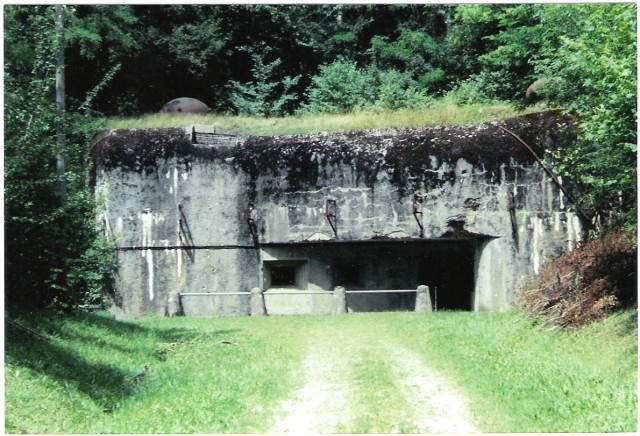
Centered around the city of Thionville there are several two more forts, Hackenberg and Immerhof and thousands of pillboxes, bunkers, and gun emplacements. Further south into the Ardennes and out of convenient range of the casual day-tripper is the town of Verdun and its nearby historical battlefield, the scene of one of the bloodiest struggles of the Great War. Travelers from here can visit the champagne region, Reims, and Paris or head east to the beautiful city of Strausbourg on the Rhine.
Closer a field the culmination of every trip down the Mosel is the city of Koblenz. For the wine enthusiast, interested in adding Rheingau, Rheinhessen, and Pfalz to their tasting itinerary, a Koblenz home base is perfect. Sitting at the juncture of the Rhine and the Mosel Koblenz, is a delightful mix of Middle Ages charm and the best of modern Germany. Near Koblenz is a factory/artist studio which manufactures salt glazed pottery items which you will see all over Germany. If you know someone who likes the heavy, beautiful look and colors of salt glazing, this will be the time to pick up a gift.
A German breakfast typically includes powerful coffee, juice, bread and rolls, hardboiled eggs, and a meat and cheese platter. You can tell a German breakfast from an English one by the absence of baked beans and grilled tomatoes.
Koblenz is best known to the tourist as an embarkation point for the Rhine River tours that are a must for every European vacationer. Boats leave from the Rhine waterfront several times a day. Morning tours give the traveler the option of a return on the river while afternoon departures necessitate a very affordable and enjoyable train ride back to Koblenz. Koblenz is also a port for more extensive European river travel for the “cruise oriented” tourist.
Walking the length of the Rhine waterfront alone can be worthwhile day or night. River traffic is continuous and varied while the river walk alternates from a park like setting, lined with beautiful homes, to a busier waterfront overlooked by cafes and restaurants. At the confluence of the two rivers you will reach the immense bronze statue of Kaiser Wilhelm I. Turning the corner and walking up the mouth of the Mosel, past the French cruise barges, you can then enter the walls of the old city of Koblenz. Koblenz has several market squares with endless opportunities for dining, drinking, and picture taking. Koblenz has a wonderful combination of old and new with trendy restaurants and clubs along side traditional fine dining restaurants and cafes.
Shopping in Koblenz is really some of the best in Germany and this is a city priced for the value conscience German more than the tourist. If you have to pick up a gift, buy it in Koblenz, it will cost less.
Enjoy you trip to this region of Germany whether your tastes run toward wines, castles, river touring, gastronomical delights, or just plain reveling in the beautiful scenery. I did!

Carol graduated from Riverside White Cross School of Nursing in Columbus, Ohio and received her diploma as a registered nurse. She attended Bowling Green State University where she received a Bachelor of Arts Degree in History and Literature. She attended the University of Toledo, College of Nursing, and received a Master’s of Nursing Science Degree as an Educator.
She has traveled extensively, is a photographer, and writes on medical issues. Carol has three children RJ, Katherine, and Stephen – one daughter-in-law; Katie – two granddaughters; Isabella Marianna and Zoe Olivia – and one grandson, Alexander Paul. She also shares her life with her husband Gordon Duff, many cats, and two rescues.
ATTENTION READERS
We See The World From All Sides and Want YOU To Be Fully InformedIn fact, intentional disinformation is a disgraceful scourge in media today. So to assuage any possible errant incorrect information posted herein, we strongly encourage you to seek corroboration from other non-VT sources before forming an educated opinion.
About VT - Policies & Disclosures - Comment Policy

